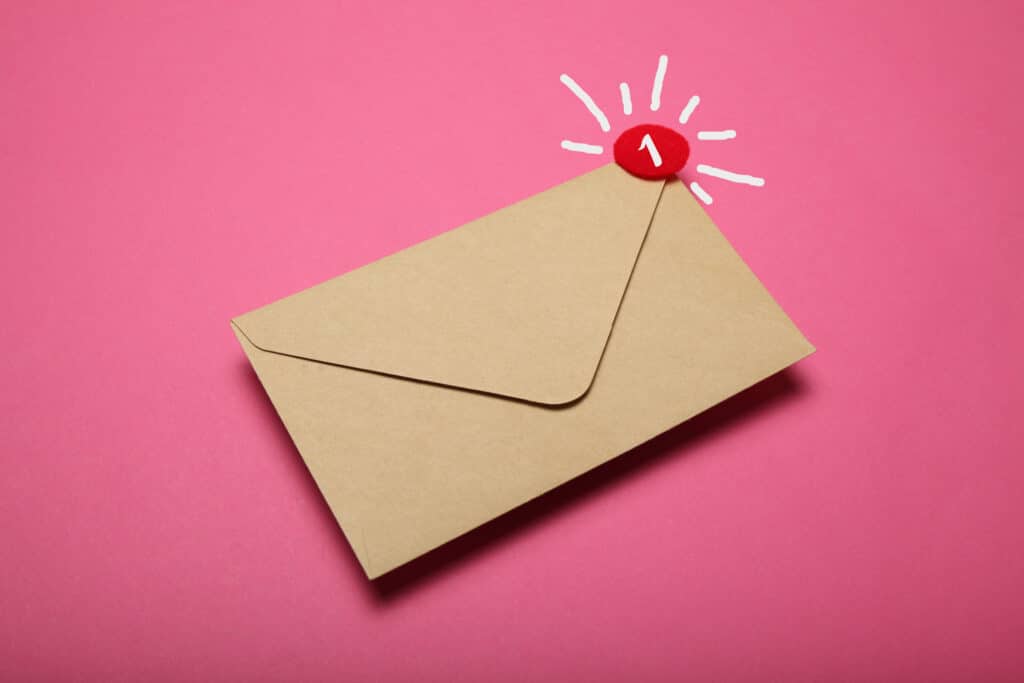We understand if you may have your doubts about cold emails. The reality is that there are plenty of ways you can send the wrong messages and see little to no response. Sometimes the reason is the content of the email; sometimes it’s the quality of the database. Plus, there’s no shortage of opinions about the best ways to write these kinds of messages, some of which may openly conflict. That’s why we’ve consolidated some tips we think you should keep in mind. Do cold emails work? Yes they do, and here’s how.
It’s Time To Ask a Single Question
If you were speaking with a lead in person, what would you say to them? Would you try the sales pitch right off the bat, or ask them a simple question to qualify them a bit more?
We ask because, in our experience, sending single questions through email tends to elicit more direct responses. Why? For starters, they look more like the start to a real conversation between two people, rather than a mass email blast. Second, they get straight to the point.
Put another way, if you were writing to someone and shooting off a quick email, you’d probably stick to one or two sentences to make a statement and maybe ask them a question, rather than embellishing that message with multiple paragraphs to explain your reasoning.
So if you want to look real, keep it brief — really brief.
Don’t be discouraged, but cold leads aren’t really all that interested in who you are and what you do. That’s because they don’t know you (yet), which is why receiving long-winded, unrequested emails from you can come across as off-putting. They may want to know why you’re emailing them specifically, but that answer can be a part of your follow-up process once you have them engaged.
To reiterate, just write one to two sentences. If you can keep it to one question, that’s ideal. Then try sending that to a list of your leads and see how many respond.
It’s as simple as drafting something like,
Hi Jane,
Are you currently evaluating tools for email marketing?
You’re Thinking This Is Crazy. Or Too Easy. Or Too Good To Be True.
There are a lot of marketers who would probably tell you to do otherwise. Don’t worry — there was a time when we would’ve given similar advice. But the use of email in B2B conversations has always been evolving. Prospecting or marketing or sales — it doesn’t matter. People will adopt new strategies as they work, the market will then become saturated by that technique, and the time will come to find other ways of standing out.
Take email open rates, for example. They used to be the litmus test for how well an email campaign performed and which subject lines were better. Those have since been called into question, thanks to iOS privacy updates and the supposed end to third-party cookies. Now it’s click-to-open rates (CTORs) that are the arguable standard to measure the success of your outreach.
Does this mean that you should say goodbye to using lengthy emails of any kind?
For prospecting purposes, yes. For others, not necessarily.
Effective cold emails depend on looking as natural and conversational as possible to catch the interest of your leads. The reason many people think longer emails are better is because they argue that you should be sharing value with those leads at this stage — and that value often deserves longer explanations, like beginning an email with the reason why you’re writing to them, touching on a pain point they might have, segueing over to your product or service, and finally ending with a call to action (usually asking them for phone call).
While you can certainly try this long-email approach, your cold leads will recognize that you’re selling to them. And let’s face it: it’s really hard not to write sales copy.
You have to train yourself to not write that way, because cold leads won’t be interested. They don’t want to feel pressured to respond to you. So make it as easy as possible for them to answer you by asking a single, straightforward question.
Not only does this help you confirm whether they’re the right person for a new business discussion, it makes it easier for you to clarify your intent for scheduling a phone call. Then, once they’re qualified for marketing or sales, you can move them over to the appropriate CRM with a different email size/cadence — i.e., the longer format discussed above.
How Many Emails Should You Send?
Once you send a single question, what comes next? We’ve seen success by testing a series of three or four emails that focus on a similar topic and use one or two sentences apiece. This follow-up sequence can reinforce the overall purpose for these emails, as well as provide multiple opportunities for leads to respond if they overlook or forget about a previous one that you sent them.
Unless leads request to be unsubscribed, or become opportunities, or don’t open your emails for extended periods of time, we’d recommend that you continue to reach out to them with this email cadence once or twice a month.
You’ll also want to review the electronic activity of each of these campaigns to see which messaging performs better, whether you’re sending to your entire database or to segmented lists (we recommend the latter if possible).
Our Solution
Marketing Armor offers personalized cold email services through its Prospecto program. We’re able to take lists of contacts, verify their email addresses, and reach out to them using the methodology outlined above. We acquire these contacts from a data aggregate source based on specific parameters you may have like geography, company size, job function, and industry. Or, we can use contacts from a database you already have.
As we test different segments with messaging that you approve, we’ll evaluate whether they’re worth keeping or whether it’s time to focus on onboarding different ones. The goal of this process is to help you develop a database of active contacts that is large enough to consistently provide you with responses and leads that your team can evaluate.
The Importance of Maintaining Cold Emails
Email is arguably still the most effective digital marketing tactic, especially if third-party cookies go away.
Do cold emails work? Absolutely. Asking single questions are more likely to get you responses. The point is to be as real and authentic as you can to give the impression of a one-on-one conversation.
Please let us know if you’d like to see examples of what cold email campaigns might look like for your business, learn more about how to write effective cold emails, or discuss other email marketing tactics by clicking the link below.





